Inhibition of autophagy aggravates DNA damage response and gastric tumorigenesis via Rad51 ubiquitination in response to H. pylori infection
- PMID: 32588736
- PMCID: PMC7524160
- DOI: 10.1080/19490976.2020.1774311
Inhibition of autophagy aggravates DNA damage response and gastric tumorigenesis via Rad51 ubiquitination in response to H. pylori infection
Abstract
Helicobacter pylori (H. pylori) infection is the strongest known risk factor for the development of gastric cancer. DNA damage response (DDR) and autophagy play key roles in tumorigenic transformation. However, it remains unclear how H. pylori modulate DDR and autophagy in gastric carcinogenesis. Here we report that H. pylori infection promotes DNA damage via suppression of Rad51 expression through inhibition of autophagy and accumulation of p62 in gastric carcinogenesis. We find that H. pylori activated DNA damage pathway in concert with downregulation of repair protein Rad51 in gastric cells, C57BL/6 mice and Mongolian gerbils. In addition, autophagy was increased early and then decreased gradually during the duration of H. pylori infection in vitro in a CagA-dependent manner. Moreover, loss of autophagy led to promotion of DNA damage in H. pylori-infected cells. Furthermore, knockdown of autophagic substrate p62 upregulated Rad51 expression, and p62 promoted Rad51 ubiquitination via the direct interaction of its UBA domain. Finally, H. pylori infection was associated with elevated levels of p62 in gastric intestinal metaplasia and decreased levels of Rad51 in dysplasia compared to their H. pylori- counterparts. Our findings provide a novel mechanism into the linkage of H. pylori infection, autophagy, DNA damage and gastric tumorigenesis.
Keywords: H. pylori; DNA damage; Rad51; autophagy; gastric carcinogenesis; p62.
Figures
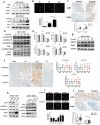
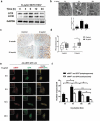
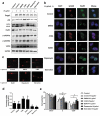
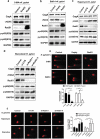
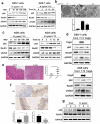
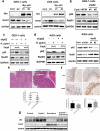
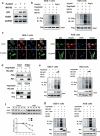
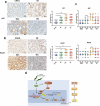
References
Publication types
MeSH terms
Substances
LinkOut - more resources
Full Text Sources
Medical
Research Materials
